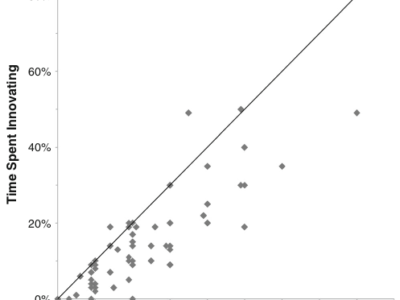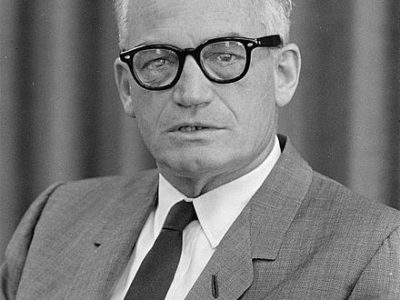Do water managers’ perceptions influence innovation?
New survey probes the innovation deficit
Climate change and population growth are rapidly increasing stress on our water systems, challenging their ability to deliver critical services. To respond to this, we need more than simple course adjustments in how we manage our water – we need entirely new paradigms that will improve resource efficiency and support more sustainable urban water systems. Considerable work is being done to develop new visions for sustainable water infrastructure. Actualizing the...
CONTINUE READINGBrexit Claims Its First Victim: The Environment
The new British government is turning sharply against environmental protection.
The Brexit vote elevated Theresa May to the Prime Minister's office. One of her first steps has been an attack on environmental protection. In what the Guardian called the "most radical shakeup in the shape of Whitehall for years." She abolished the Department for Energy and Climate Change and moved its functions into the Department for Business, Energy and Industrial Strategy. Did you notice that the word "climate" disappeared along the way? That's just as ...
CONTINUE READINGThe Slow Pace of Rulemaking
Rulemakings take a long time. We don't really know what causes the delays.
A recent study by Public Citizen reports that it takes about 2.5 years to issue an economically significant rule, starting from the time the rule is first listed in the regulatory agenda. There are major differences between agencies – an economically significant rule takes EPA almost four years, rather than the 2.5 years needed by the average agency. But if the rule is accompanied by an advance notice of proposed rulemaking (ANPR), the average time is over four year...
CONTINUE READINGRed, white, blue and smog
Fireworks leave behind a lot of pollutants
As a kid on the South Side of Chicago, summertime meant seeing White Sox games at Comiskey Park (technically now called U.S. Cellular Park, but I will never call it that). If the Sox won, there were fireworks. And on Saturdays, there were fireworks even if they didn't. I have a distinct memory of asking my parents if the fireworks polluted the air, seeing the clouds of smoke floating above us afterward. They assured me that there weren't enough fireworks to have any ...
CONTINUE READINGCitations for environmental and energy law professors
The most-cited environmental and energy law professors in 2010-2014
Brian Leiter at Chicago is doing one of his occasional series identifying the top cited legal scholars in a range of substantive areas. One list he has done covers administrative and environmental scholars – however, his list includes a number of top administrative law scholars who do not focus on environmental and energy law. I thought it might be helpful to our readers to have a list that is focused on scholars who work substantially or primarily on environmental...
CONTINUE READINGMajor Settlement Announced in Volkswagen Emissions Fraud Litigation
$14.7 Billion Civil Enforcement Settlement is a Victory for Consumers, Environmental Prosecutors
Federal and state environmental prosecutors today announced a proposed settlement of government civil enforcement litigation they've pursued against Volkswagen in response to the automaker's acknowledged efforts to cheat federal and state auto emission standards and defraud consumers. The complex settlement, lodged with the assigned U.S. district court judge in San Francisco, requires Volkswagen to pay government regulators and consumers approximately $14.7 billion. ...
CONTINUE READINGBarry Goldwater, Environmentalist
Goldwater was passionate about saving the planet.
Barry Goldwater's views on the environment didn't have much in common with those of the present-day conservatives who are his ideological descendants. His 1970 book, The Conscience of a Majority, has half a chapter about the environment. "Our job," he said, "is to prevent that lush orb known as the Earth . . . from turning into a bleak and barren, dirty brown planet." Another quote that may surprise you: "I feel very definitely that the administration is absolutely...
CONTINUE READINGThe Complexities of Implementing Brexit
Scores of regulatory arrangements will need to be negotiated. Lots of work for lawyers!
The larger implications of the Brexit vote are understandably getting a lot of attention. It's clear, for instance, that the UK will need to negotiate some kind of trade agreement with the EU, and that it will probably want to negotiate one with the U.S. But there are myriads of issues that need to be worked out, providing work for regulatory lawyers for what may be years to come. We can get a sense of this by looking at two countries that have "special relations...
CONTINUE READINGOak woodlands and wine
A recent controversy highlights the impacts of wine industry on native California oak woodlands
A popular San Luis Obispo county winemarker is suffering a backlash in restaurants after press reports that the winemaker bulldozed oak woodlands to expand production—possibly in violation of a county land grading ordinance. The dispute (as this Wine Enthusiast piece makes clear) is not a novel one. There is a long history of winemakers in California converting oak woodlands to vineyards, with potentially substantial impacts on native species habitat. Conversio...
CONTINUE READINGThe National Park Service and Climate Change
Does the agency have the legal tools to respond to climate change?
This past weekend President Obama visited Yosemite, helping the National Park Service celebrate its 100th anniversary. As part of his remarks, the President noted that climate change is already causing major impacts on the resources in National Parks around the country—for instance, causing the disappearance of the glaciers in Yosemite and increasing fire risks in the forests. The President is quite correct that climate change will create large challenges for mana...
CONTINUE READING







